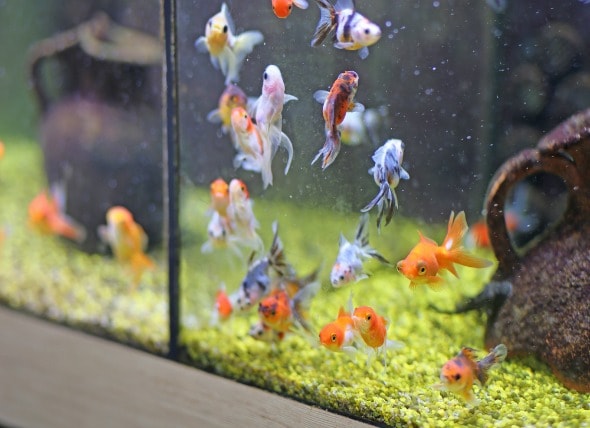
New Tank Syndrome in Fish
Similar to "old tank syndrome," new tank syndrome is a fish disease that occurs in aquarium fish that live in water with high levels of ammonia.
Symptoms
New tank syndrome leads to ammonia toxicity in the fish, which can quickly become fatal. Fish will often die suddenly, without warning.
The aquarium water is frequently cloudy and smelly due to the excessive ammonia and nitrite levels.
Causes
Also known as the "break in cycle," the cause of the high levels of ammonia in a new tank are due to the lack of beneficial bacteria in the water — bacteria that keep the water levels safe by breaking down ammonia and nitrite into harmless nitrogen compounds. In a newly set up tank, these bacteria have not a chance to establish, allowing the ammonia and nitrite levels to quickly become toxic for the fish living in the water. This usually occurs in tanks that are just 1 to 20 days old, and maybe longer, since it takes a few weeks for the bacteria to establish themselves in enough quantity to keep up with the amount of waste the fish are producing.
This is not limited to new tanks, of course. Some other reasons for a sudden increase in ammonia levels include:
- Overfeeding of fish
- Overstocking of fish
- Improper dechlorination of water containing chloramines (i.e., sodium thiosulfate can create a reaction which releases ammonia)
- A cleaning that is too thorough
- Change of old gravel to new gravel
- Sudden changes in water temperature
Prevention
The key to preventing new tank syndrome is to allow the new water conditions to cycle through the nitrogen cycle before adding fish. Of course, the cycle cannot even begin until fish have been added to the water, so it is not helpful to allow the aquarium to sit for a few weeks before adding the fish. It is only through the cycle of waste and establishment of beneficial bacteria that will begin the cycle. Using a few "starter fish," to begin the new aquarium — hardy species of fish that are less susceptible to harm from ammonia levels — before adding any new fish will set the cycle in progress. You can then determine the progress of the cycle by checking the water chemistry over the course of about 4-6 weeks.
Some owners have also found it helpful to add already established gravel from an older tank to help speed up the process. If you do not have an already established aquarium from which you can take gravel, the handler that you will be buying your starter fish from may be able to help you with a sampling of gravel that the fish have been living in. It is not wise to change the water until the cycle has completed.
You can also control ammonia levels by avoiding overfeeding, since uneaten food will contribute to organic debris. Perform regular pH tests on the water throughout the initial process will help you to track the progress of the cycle and make changes accordingly, so that you can determine when to safely add new fish to your aquarium. Your tank will be cycled once you can measure nitrates in the water and ammonia and nitrite levels are at zero.











0 comments:
Post a Comment